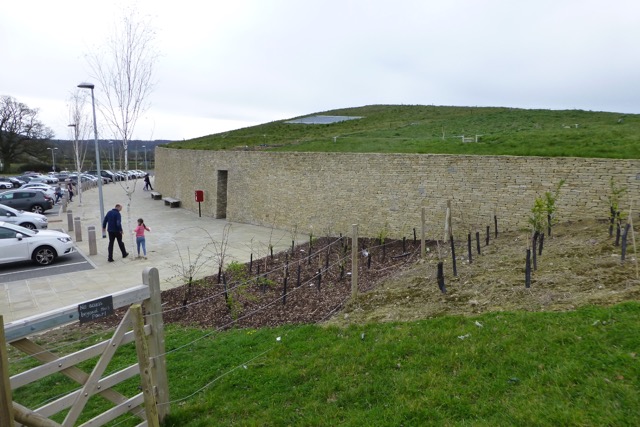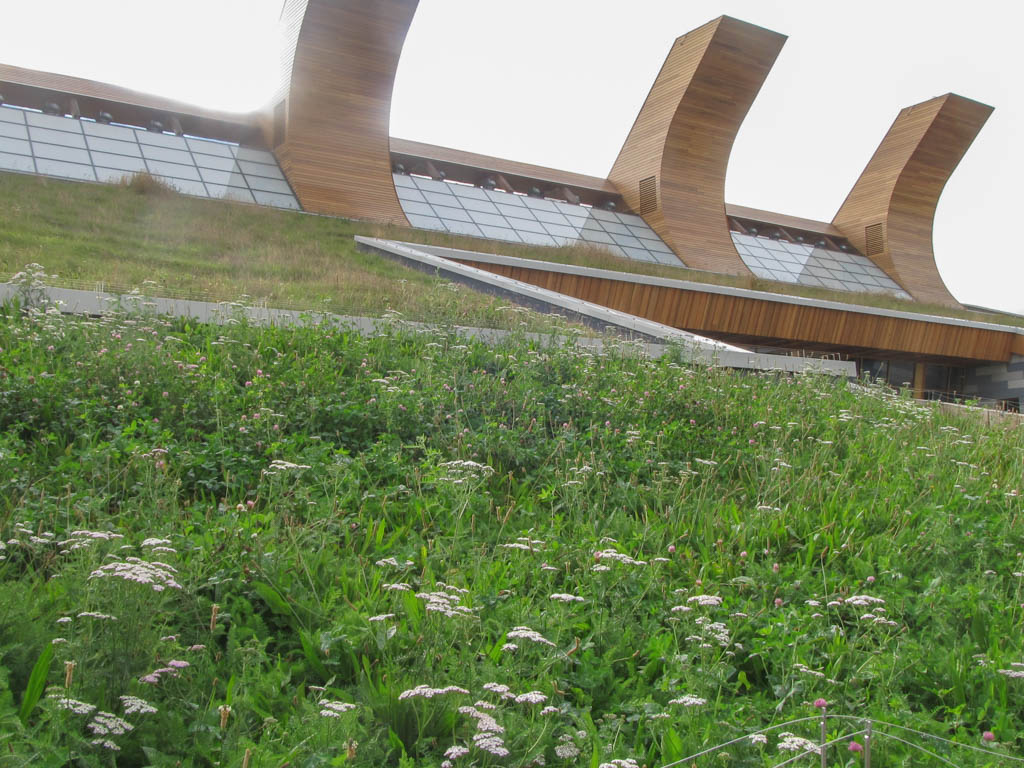This blog has been written by The Flood Hub People.
Green roofs aren’t just great for the environment, they also help manage flood risk, cool urban areas and boost biodiversity. Discover the many benefits of living roofs and why they’re becoming a smart solution for sustainable cities.
Also known as a living roof or eco roof, green roofs are an increasingly popular way to turn unused roof space into something that works for both people and the environment. While the idea isn’t new, dating back thousands of years, modern green roofs have come a long way in terms of design and efficiency.
In this blog, we’ll explore the different types of green roofs, their flood management benefits, and what you need to consider if you’re thinking of installing one on your home or business.
The concept of roofing with vegetation dates back centuries. Traditional ‘sod roofs’ were especially popular in Scandinavia, where they helped insulate homes by keeping heat in during winter and reducing heat in summer.
Today’s green roofs are far more advanced. Developed in Germany during the 1960s, modern systems include multiple layers for protection, water storage, drainage and planting. Berlin is now home to one of the world’s leading green roof research centres.
Although green roofs have long been common across parts of Europe and North America, they’re becoming increasingly popular in the UK, particularly in urban areas, where space is limited and the environmental benefits are badly needed.

Gloucester Brookthorpe Services cc-by-sa/2.0 – © David Lally – geograph.org.uk/p/4902218
There are two main types of green roofs used in urban and commercial settings:
Extensive Green Roofs
Intensive Green Roofs
Both types bring major environmental benefits, but choosing the right one depends on your roof structure, budget, and how much maintenance you’re willing to do.

Green Roofs at Laboratory for Sustainable Chemistry, Jubilee Campus cc-by-sa/2.0 – © SK53 – geograph.org.uk/p/5151779
1. Flood Management and Water Retention
Green roofs are a form of Sustainable Drainage System (SuDS) and work by managing rainfall at the source. They absorb and hold rainwater, which helps slow down surface water runoff entering drains and sewers. In some cases, green roofs can reduce runoff by up to 90%, easing pressure on drainage infrastructure and lowering the risk of flooding, especially important in urban areas prone to surface water flooding.
2. Cooler Urban Temperatures
Cities can become “urban heat islands” due to the amount of hard surfaces that absorb and re-emit heat. Green roofs help regulate temperatures by absorbing less heat and increasing moisture evaporation, helping to cool the air. This reduces energy use, improves comfort, and helps tackle the urban heat island effect.
3. Boosting Biodiversity
When planted with the right mix of plants and wildflowers, green roofs can become mini wildlife habitats. They support birds, bees, butterflies and other pollinators by providing safe spaces to feed and nest, helping to restore biodiversity in built-up areas.
4. Improved Air Quality
Plants on green roofs can help filter air pollutants, improving the quality of air in urban environments.
5. Longer Roof Lifespan
Although green roofs can cost more to install initially, they often last longer than traditional roofs. Their protective layers shield the roof from UV radiation, temperature changes and weather damage, reducing long-term maintenance and replacement costs.
6. Added Green Space in Urban Areas
For buildings without gardens, green roofs provide extra greenery and can even be used as communal or recreational spaces, improving residents’ wellbeing and mental health.
If you’re considering a green roof, here are a few tips:
More and more cities around the world are promoting the use of green roofs, and some governments even offer incentives to install them. Whether for flood alleviation, biodiversity, or simply making the most of an unused roof space, green roofs are a smart and sustainable choice for urban living.
Ready to learn more?
Click here to download our Sustainable Drainage Systems booklet.
Sources: LTU Stormwater Institute, livingroofs.org and the UK Green Roof Market Report 2017, the renewable energy hub and www.georgetownclimate.org